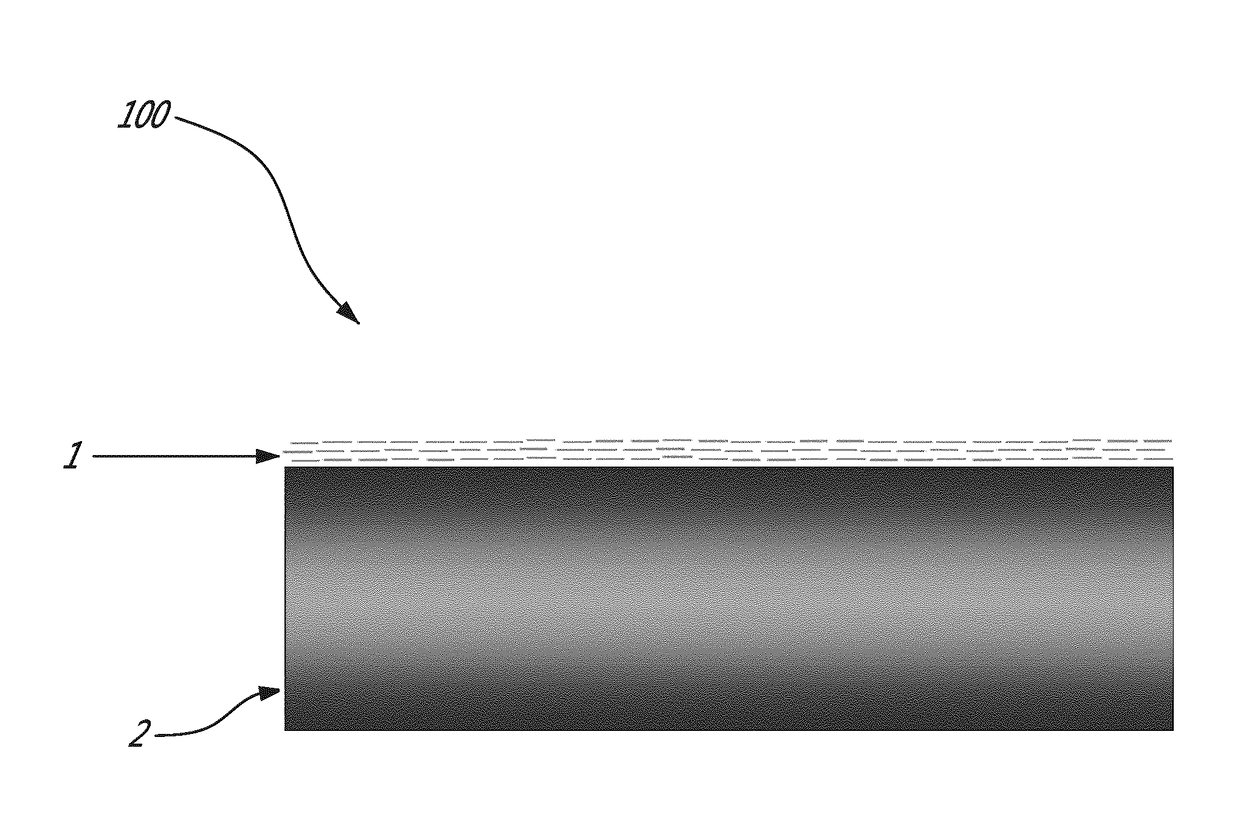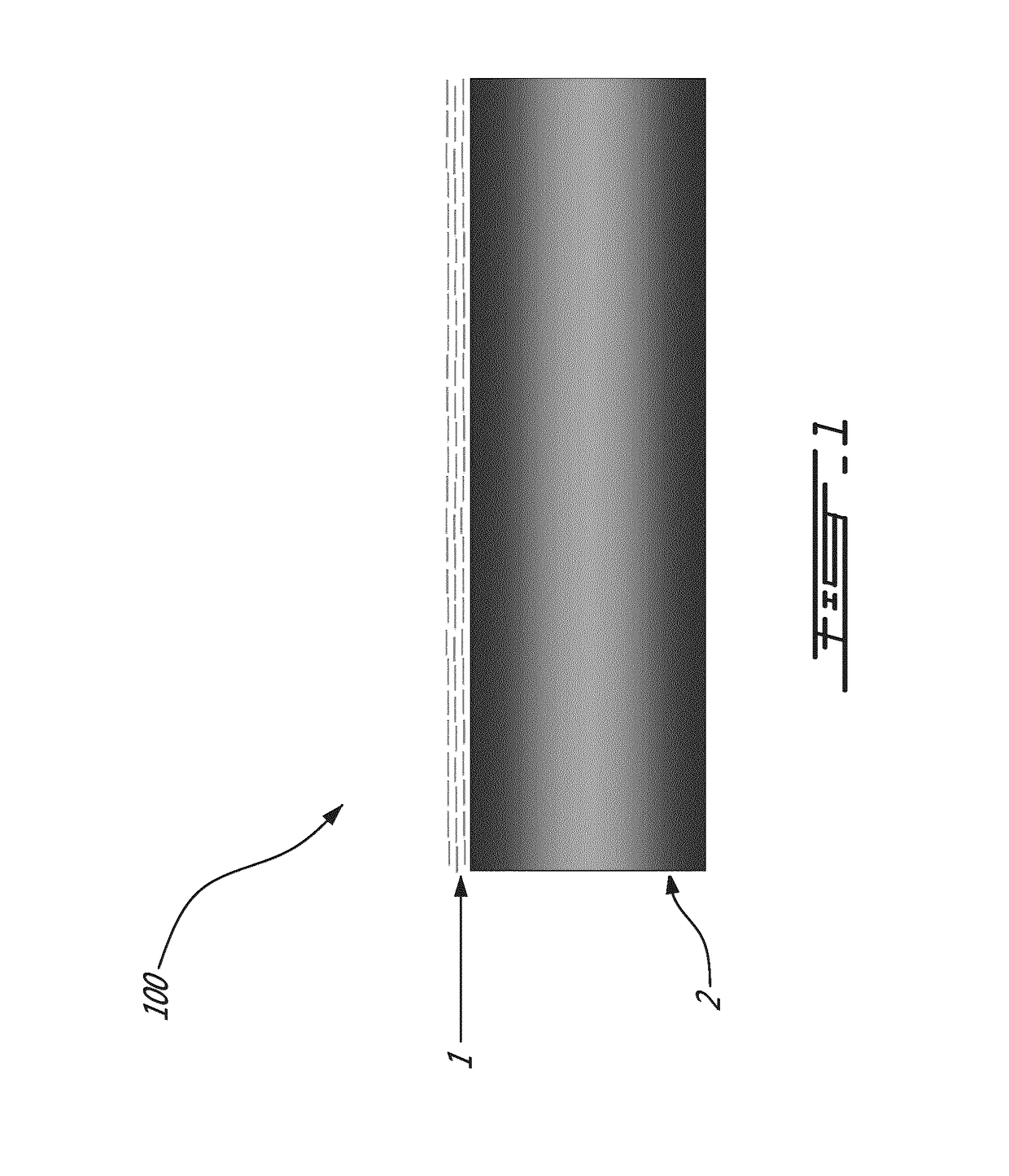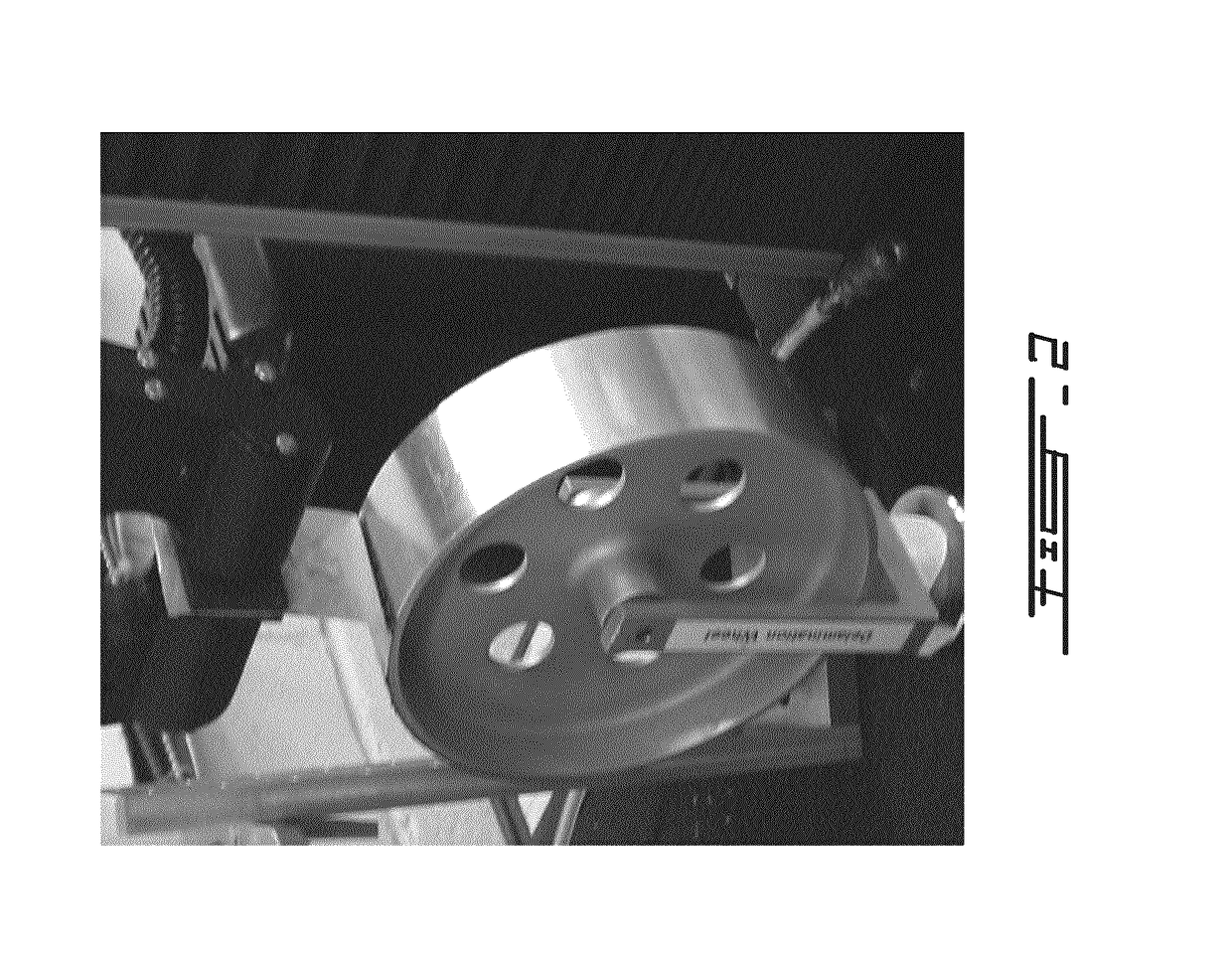Print quality on thin coatings of cellulose nanocrystals
a technology of nanocrystals and nanocrystals, applied in the direction of nanotechnology, duplication/marking methods, coatings, etc., can solve the problems of poor wet rub resistance of ink, and achieve the effect of improving halftone dot quality and superior image quality
- Summary
- Abstract
- Description
- Claims
- Application Information
AI Technical Summary
Benefits of technology
Problems solved by technology
Method used
Image
Examples
example 1
Improved Inkjet Print Quality by Means of a Thin Coating of CNC
[0071]A coating containing 90% by weight of CNC and 10% by weight of polyvinyl alcohol) (PVOH) was applied to a sheet of PET film. FIG. 4A shows that the image quality is very poor when an inkjet test image is printed on the untreated PET film. In particular, on the uncoated PET surface, lines have spread to an unacceptable extent, and the text resolution is extremely poor. FIG. 4B shows the large improvement in image quality when the same test image is printed by inkjet on the PET film coated with a thin film of CNC.
[0072]FIG. 5 and FIG. 6 show the reduction in the amount of ink bleeding in multi-colour inkjet printing after applying the thin CNC coating. Specifically, FIG. 5A illustrates the poor quality of water-based inkjet printing of untreated PET film. FIG. 5B illustrates the far superior quality of printing of the same inkjet printer on a PET film coated with CNC and PVOH. Similarly, FIG. 6A illustrates printing ...
example 2
Improvement of Inkjet Line Quality on PET Film by Means of a Thin CNC Coating
[0073]Vertical and horizontal lines of nominal 0.4 mm thickness were printed on a commercial inkjet transparency film, on pure PET film, and on pure PET film that had been treated with corona power of 10 immediately before printing. The same lines were also printed onto PET that had been coated by a mixture of CNC / PVOH immediately after corona treatment.
[0074]Visual examples have already been provided in FIGS. 4, 5, and 6.
[0075]As shown in Table 1, the line width on the commercial inkjet transparency film was close to the nominal width of 0.4 mm, and the raggedness of the line was minimal. The line width on the control untreated PET films was nearly triple the nominal value, and the line raggedness was severe. In contrast, the line width on the PET films that had received a thin coating of CNC / PVOH were all close to the nominal value, and the line raggedness was minimal. We note that the degree of line broa...
example 3
Reduction of Colour-To-Colour Bleeding in Inkjet Printing on PET Sheets By Means of a Thin Coating of CNC
[0076]The degree of undesirable colour-to-colour bleeding was greatly reduced on a thin coating of CNC / PVOH on PET sheets compared to untreated PET alone, as shown quantitatively in Table 2. Visual examples have already been presented in FIGS. 5 and 6.
TABLE 2Reduction in liquid ink to ink bleeding in inkjet printing on PET sheetsInk jet blackInkjet bleeding ofline width inblack ink onmm, printed on a yellowyellow ink. Lowerbackground. Lower isis betterbetter.Control samplesPET film as received1.97 ± 0.422.65 ± 0.45PET film, after 10 power2.20 ± 0.102.87 ± 0.26corona with coronatreatmentPET sheets treated by corona discharge and coated with CNC / PVOHmixture with the amount of PVOH as shown belowPET film coated with0.037 ± 0.0010.872 ± 0.00825% PVOH / 75% CNC,10 power corona pre-treatment
PUM
| Property | Measurement | Unit |
|---|---|---|
| thickness | aaaaa | aaaaa |
| surface free energy | aaaaa | aaaaa |
| temperature | aaaaa | aaaaa |
Abstract
Description
Claims
Application Information
 Login to View More
Login to View More - R&D
- Intellectual Property
- Life Sciences
- Materials
- Tech Scout
- Unparalleled Data Quality
- Higher Quality Content
- 60% Fewer Hallucinations
Browse by: Latest US Patents, China's latest patents, Technical Efficacy Thesaurus, Application Domain, Technology Topic, Popular Technical Reports.
© 2025 PatSnap. All rights reserved.Legal|Privacy policy|Modern Slavery Act Transparency Statement|Sitemap|About US| Contact US: help@patsnap.com



